Into The Labyrinth With The Owl In The Rafters

Howdy, and welcome to a slightly different edition of The Owl in the Rafters. Today I’m going to be reviewing a series of video games which I’ve had something of a personal affair with since the series first sneaked onto the Nintendo DS in ’07: the three-part Etrian Odyssey series. Normally I’d leave this kind of gig to Bargain Gamer, but I know he’s not much of a fan of the series so I’m tackling it myself. It may not be an anime or manga review but, for better or for worse, I won’t be sparing any of my usual long winded flare!
I’ll start with a brief rundown of the game’s history: Developed by the well known, and somewhat notorious J-RPG powerhouse that is ATLUS, the first Etrian Odyssey was released on the DS in 2007 in Japan under the title, Sekaiju no Meikyuu/Yggdrasill’s Labyrinth and in America just four months following where it was met without much fanfare. Initial release in Japan did surprisingly well, while the US reception was notably more muted, but no less positive. Despite limited sales, all major reviews marked Etrian Odyssey as an above average game with a strong pitch toward more hardcore RPG fans with a steep mechanical barrier against younger gamers.
You see, while Etrian Odyssey takes advantage of ATLUS’s popular anime art style and a genuinely talented team of designers working on its in game graphics, it sticks to the mechanics of an old-school dungeon crawler. Etrian Odyssey is built upon an interface entirely different from most RPGs today, the first person dungeon crawler gameplay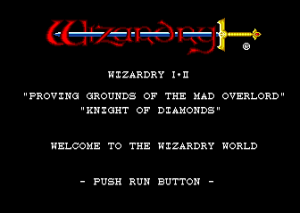 Etrian Odyssey uses was originally made popular by games like Wizardry, Avatar, Moria, and the Might and Magic series during the 1980s. Which of course leads me to the gameplay. As a classically turn-based J-RPG, Etrian Odyssey certainly doesn’t push any boundaries or break any molds with its battle system, but what it does it does well and what is there is remarkably solid. So solid in fact that you may just trip over it if you’re not careful.
Etrian Odyssey uses was originally made popular by games like Wizardry, Avatar, Moria, and the Might and Magic series during the 1980s. Which of course leads me to the gameplay. As a classically turn-based J-RPG, Etrian Odyssey certainly doesn’t push any boundaries or break any molds with its battle system, but what it does it does well and what is there is remarkably solid. So solid in fact that you may just trip over it if you’re not careful.
The controls themselves may not need any real adapting to, but the difficulty curve of these games is like a bungee cord: a sudden vertical shift that gradually levels out before cranking the difficulty up again towards the endgame. The first few levels can even seem impossible if you mistakenly go in without being ready to fight for your life. Don’t be deceived by the puny looking critters the early game throws at you, because between getting your rear end handed to you on a silver platter and making minimal money off of selling bug wings, mole pelts, and rat toenails, the healing and reviving costs for your wounded and dead party members will bleed your wallet dry.
The trick to surviving the early dungeons lies in learning to manipulate the different classes’ unique skill trees, which are surprisingly diverse and leave a lot of room for experimentation. An open mind for experimentation and a trial-and-error approach to character building is key to the game, as the game doesn’t really give you any tutorial or guidelines for the skill system itself: it does as much as telling you what Skill Points are and how to access the Custom menu before sending you off into the man-eating wilderness. (It even waits until after you’re already IN the labyrinth for the first time just to bring up the fact that you have Skill Points at all.)
So really, when I said “leave a lot of room for experimentation” what I ought to have said was “make a lot of room for experimentation”, because the room is hardly there by any sort of mistake and experimenting with them is your only way to learn exactly what does what. Of course, there are plenty of FAQs and walkthroughs that can give you all the most exploitable skill sets and party combinations to maximize damage dealing or looting capabilities, but if you’re like me and really enjoy teaching yourself and seeing your carefully projected plans pay off, then you’ll want to avoid walkthroughs for the skill trees as much as possible, if not go in entirely blind.
Speaking of walkthroughs, another reason to avoid them is that you’ll want to do all the exploring on your own in this game. Which brings me neatly to my next big point, something that I am reluctant to call the central gimmick of the game –I feel as though calling it that adds far too much conscious weight to the feature, considering it’s something that becomes like second nature rather than an active task once you’re really into the game– and what was originally supposed to be a major selling point of the games: the map.
Obviously we’ve long since advanced beyond the age of wandering blindly through gargantuan video game labyrinths through a mix of dumbing down puzzles aspects, shortening dungeon length, and providing convenient radar and auto-mapping mini-map features to RPGs, but Etrian Odyssey reminds gamers that these perhaps needlessly convenient features were not always a staple of dungeon crawling.
You see, the Etrian Odyssey games relegate the bottom touchscreen of the DS to permanent map duty. And what’s more, while the map will automatically fill in squares of floor on the grid based map as you walk over them (which itself can actually be turned off), the walls and everything within sight is left for you to map and label as you please with a set of mapping tools. Once again, this harkens back to the 1980s when dungeon crawler RPGs had no map feature at all, and so the only feasible way to make it through any such game would be to whip out a pen and a pad of graph paper and map the whole dungeon yourself. This all might seem like a particularly tedious concept on paper, but there is a certain sense of pride and accomplishment that you can really only get from knowing you’ve mapped and labeled a complicated dungeon, from secret passages down to noting the contents of specific chests, all on your own.
What this also means is that rather than running wild through the dungeon floors until you just happen to bump into the next flight of stairs, you really do have to take you time to watch where you’re going, gauge yourself, and make sure you’ve accurately mapped the way you came, should an unexpected ambush or shortage of equipment demand a prompt retreat back to town. To add to this, there is one more unique feature in the Etrian Odyssey series that works in conjunction with the map to make the adventure a bit more exciting.
F.O.E. appear on your first person dungeon screen as some kind of a large orange sphere of haze/light/hair… or something… –seriously, I have no bloody idea what it is supposed to be; it’s an orange hazy/fuzzy ball or a miniature sun– and on your touchscreen map as a circular purple icon with an arrow head, but are only visible while occupying squares on the map that you have already been on yourself. The arbitrary acronym was originally Field-On-Enemy in the Japanese version but was changed for the English release to Formido Oppugnatura Exsequens, which translates roughly from Latin as “Dreaded Following [thing] About to Attack”.
In any case, when you come to occupy the same square as an FOE you engage in a not-so-random battle with a specific monster. Outside of battle, every FOE is perfectly identical, but the monster you fight depends on which specific FOE on which floor, so there’s no telling what you are going to be fighting until you enter into battle for the first time. Running headlong into an FOE the moment you see one is probably not a good idea however, as each and every FOE is effectively a mini-boss level monster. What’s more, FOE roam around the dungeon on their own, moving one square per turn, just like you (or one square every two turns if they are particularly slow or cautious enemies inside that orange haze) and with an assigned front and back according to their direction of movement. I specify that there is a front because if you enter into an FOE’s line of sight, many are libel to give chase across varying distances, and consequentially battles with FOE can be easily avoided by keeping out of sight.
When I break things down to this level I know it can be a little hard to see the appeal, but hang in there with me, as I’ll go over the specific differing aspects of each game in just a moment, but just to be perfectly clear on this before we move on I want to go over the bare bones basics that stay consistent throughout all three games:
You navigate the dungeon in the first person. UP on the D-pad sends you in the direction you’re heading, DOWN steps back, and LEFT and RIGHT turn you 90s degrees in the respective direction without moving from where you’re standing. Battle is conducted via turn based menu with a choice of Attack, Defend, Skills, Item, Switch (which I will get to shortly) and Escape. Killing enemies gives loot and Experience Points; Experience Points level you up; leveling up grants 1 expendable Skill Point per level and increases basic attributes like Strength, Technique, Vitality, Agility, and Luck; loot sells for gold and provides ingredients for new weapons and armor, which you buy with more gold. Most of this was probably obvious as your standard JRPG basics, but I just wanted to be crystal clear.
The original Etrian Odyssey‘s unique features are more or less limited to its story –Not to cheat the game out of due credit, as it was a great starting point for the series and the class system was solid enough to be reused in full in the second game along with some supplementary additions. The fact is simply that there’s nothing Etrian Odyssey did well that the 2nd or 3rd games didn’t just do just as well or better, of course for the subjective quality of the story.
The story brings you to the Town of Etria. As an adventurer seeking either riches, fame, and/or thrills, you have come at the behest of the Radha, the governing force of Etria, for beneath the town sits the mysterious Yggdrasil Labyrinth that has called and claimed many an adventurer before you. Your job as leader of your guild and by order of the Radha, is to map the furthest most depths of the dungeon and to study the ecology, both flora and fauna, of the dungeon and uncover its mysteries so that future generations of Etrians may live without fear of the unknown.
Once you start you’ll first be prompted for a Guild Name; this is what the game will refer to you and your guild as collectively for the purposes of the story. Once you have a guild it will be empty, so you will have to make some characters. There are no preset player characters in the Etrian Odyssey games, so you get to make them. The first prompt will be for a name, then for a class, and then for a character portrait. There are seven basic starting classes with two special classes that are unlockable during the story, and every class has a selection of four different character portraits: two male and two female. Your choice of classes are:
Landsknecht – Sword and axe wielding fighters with balanced attack and defense. These are your quintessential adventurer swordsman characters. The difference between their weapon choices being that while axes and axe skills deal more damage, sword skills offer splash and group damaging attacks that can sometimes be more useful than dolling out massive damage to just one opponent.
Survivalist – Fleet footed archers who can use both bows and daggers. As ranged fighters Survivalists take no penalty for attacking from the back row, so they can add a much needed extra punch on top of the front line attackers.
Protector – Standard Paladin types with heavy defense and some limited healing capabilities. A solid backbone to a good adventuring party. While I’m not quite dedicated enough to test it myself, I’ve heard of people soloing games with a single Protector and nothing else.
Dark Hunter – Whip and dagger users with wide range of status ailment and limb binding techniques. A bit of a wildcard, considering it’s the front line class with the highest rate of death in early levels.
Medic – I shouldn’t need to really explain this, but they are your standard healers. Back line party members, low attack and defense, but often the only things keeping you alive long enough to see the end of FOE fights and haul ass back out of the dungeon.
Alchemist – The classic magic users of the game with access to Fire, Ice, and Lightning elemental attacks, as well as poisons. Skills in all four alchemy fields can deal light single damage, light group damage, and heavy single damage. A fragile defense keeps them in the back line, but they can dish out some of the heaviest hitting special attacks in the game.
Troubadour – Musical performers and dancers with stat boosting skills that affect the whole party. Like the classic D&D Bard they aren’t really a necessity, but a good Troubador with the right mix of skills and strategy can really push the limits of minimizing damage taken and maximizing damage dealt.
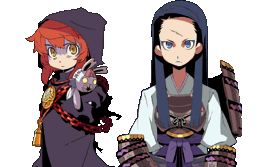 And the two bonus classes are the Ronin and the Hexer, which I will leave as a bit of a mystery for those of you who may be eager to try this for yourself. It won’t take too long to unlock the two, and you’ll know who unlocks them for you almost right away as there is a pair of Ronin and Hexer NPCs integral to the plot.
And the two bonus classes are the Ronin and the Hexer, which I will leave as a bit of a mystery for those of you who may be eager to try this for yourself. It won’t take too long to unlock the two, and you’ll know who unlocks them for you almost right away as there is a pair of Ronin and Hexer NPCs integral to the plot.
In any case, you make your characters, and then build your party. A party can contain from one to five characters in a Front Line and Back Line of up to three characters per line. What this means is that with a full party of five, you will have one line of three and one line of two. Front line takes more damage than the Back line and the Back line deals out less damage in exchange. Most classes have a line they are best suited for, but a few are good in either, and those are all fairly easy to keep track of. This is where the Switch command in battle comes in, as it allows party members to switch with one another between front and back lines.
Once you’re let loose on the town there are seven destinations for you to wander around between. First is the Inn where you can sleep in order to heal and pass time, and of course save your game; second is the Apothecary where you can go to revive the dead and buy healing items; the general store is where you go for your weapons, armor, and adventuring items like the all important Warp Wire that allows you to immediately escape the dungeon; the Pub is where you go to accept and report upon missions to gain extra money and reward items; the Explorers Guild is where you go to recruit new guild members, organize your party, and Retire or Rest* your existing members; finally Radha Hall is the center of all plot related missions, and of course the Forest Entrance takes you to the dungeon itself.
*Retiring a party member above level 30 removes them from your party forever, but replaces them with a fresh new recruit with bonus skill points and a noticeable stat boost based on the retired character’s stats. Resting resets all skill-points on a character at the cost of 5 levels, and of course the subsequent 5 skill points for those levels. This feature is an invaluable tool when experimenting with the skill trees, as it allows you take back points from skills you found to be less useful and put them into the skills you learned to love so that in the long run, no skill point goes to waste.
So, once you’ve got your party all decked out in cheap armor it’s off to the dungeon! Strangely however, after a short tutorial mission the game just sort of lets go and lets you coast, no training wheels attached. Given the fairly steep difficulty levels I mentioned earlier this more or less guarantees your party getting banged up before they really get the hang of the whole adventuring gig. It won’t even give you your first big mission other than the mapping tutorial until after you find your way to the second floor by yourself.
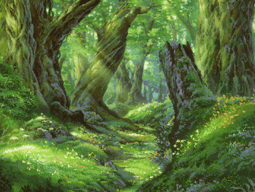 The first level of the dungeon drops you into the Emerald Grove and as you explore the surprisingly beautiful, sun speckled forest dungeon, and learn to conquer its many furry woodland critters and pesky bugs you’ll start to get a little bored. Not to worry though, the dungeon is divided into different strata with each strata consisting of four to five floors, and each with its own unique look.
The first level of the dungeon drops you into the Emerald Grove and as you explore the surprisingly beautiful, sun speckled forest dungeon, and learn to conquer its many furry woodland critters and pesky bugs you’ll start to get a little bored. Not to worry though, the dungeon is divided into different strata with each strata consisting of four to five floors, and each with its own unique look.
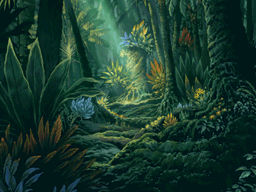 The first game really tries to ease you into the whole strata idea as the second stratum only darkens things up a bit, turning the lush green forest into the shadowy Primitive Jungle, where as later games would make more jarring changes in scenery. The little fluffballs you had been fighting just a few floors earlier are replaced with killer plants and a whole lot of insects.
The first game really tries to ease you into the whole strata idea as the second stratum only darkens things up a bit, turning the lush green forest into the shadowy Primitive Jungle, where as later games would make more jarring changes in scenery. The little fluffballs you had been fighting just a few floors earlier are replaced with killer plants and a whole lot of insects.
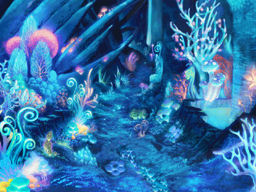 The third Stratum pulls a fast one by walking you out of the dark of the jungle into a surreal Azure Rainforest filled with bioluminescent ferns and fungi that tint the whole forest blue with a distinctly subterranean fantasy feel. These floors are filled primarily with various kinds of frogs, ants, and worms; all the things you’d expect from a rainforest.
The third Stratum pulls a fast one by walking you out of the dark of the jungle into a surreal Azure Rainforest filled with bioluminescent ferns and fungi that tint the whole forest blue with a distinctly subterranean fantasy feel. These floors are filled primarily with various kinds of frogs, ants, and worms; all the things you’d expect from a rainforest.
The fourth stratum throws another curve ball as you finally exit three strata of thick foliage to find yourself thrust into the Sandy Barrens. The desert wasteland not only introduces another fresh change of wallpaper, but prompts a noticeable shift in dungeon design, from tight winding passageways, to more wide open spaces. It also includes some of the secret areas that lead back up the labyrinth to parts of earlier maps not previously accessible along with new monsters, items, and shortcuts.
 Stratum five continues to play games with some shocking changes of scenery to accompany the ongoing mystery surrounding the labyrinth as it finally starts to unravel itself. And while not technically part of the main story line, strata six is a special final stratum that includes multiple different boss monsters leading up to the game’s true final boss.
Stratum five continues to play games with some shocking changes of scenery to accompany the ongoing mystery surrounding the labyrinth as it finally starts to unravel itself. And while not technically part of the main story line, strata six is a special final stratum that includes multiple different boss monsters leading up to the game’s true final boss.
As the first game in the series it really kicks things off to a great start. The mechanical aspects are simple but effective; the balance of enemy levels is pleasantly challenging; the classes and skills are tons of fun to tinker with over the course of the game; the music was pleasant enough to keep from being annoying after listening to it for hours on end, but I must confess, not terribly memorable; and while the story was virtually nonexistent for the first three strata, once the end of the fourth stratum is in sight the story is just captivating enough to make the big reveal of the fifth stratum a genuine shock. All the while the real fun of the game might just be in how little detail your characters are given. You yourself are never named, only noted as the head of the guild, while your characters have no background stories either. While this may seem a bit dull, the game does encourage you to just kind of make up your own motivations, stories, and personalities as you go along, and provides you ample opportunity to do so if you choose to.
Moving ahead to Etrian Odyssey II: Heroes of Lagard, the second installation keeps all the original classes and character designs, but comes sporting brand new and updated artwork. It also gives you the previously unlockable Ronin and Hexer classes right from the get go, and adds two brand new standard classes, the War Magus and the Gunner. There is also a new unlockable class, the Beast.
Other than new classes, some new perks are added to the interface to make things easier as well. Navigating between different status pages is made easier with the inclusion of the use of right and left shoulder buttons. In the dungeon the L and R buttons also allow you to strafe from side to side. The left shoulder button is also used to activate an Auto Mode in battle, that has all party members attack whichever enemies have the highest HP at the start of the attack. This is nice when you’re in an under-leveled area and don’t feel like dealing with small fries, but because of how the AI distributes the damage evenly between enemies, it’s not a good idea to use in any battle you have any real chance of losing.
The new report system now includes a Gear Registry, to keep track of all the equipment you’ve ever owned, adding another encyclopedia to fill up in addition to the returning Monster and drop item Codices. Strangely enough this feature would be dropped from the third game. While certainly not a great stride forward, and a perfectly acceptable loss for the third game, I would have thought the additional level of detail on recording your exploits would have been worth keeping.
Then of course there is the map tool, which gets a noticeable upgrade as well, offering a number of different floor tile colors to help differentiate normal ground from trap floors like thorns, mud, lava, and pit falls. It also broadens the selection of map icons to include secret passages, one-way floor traps, differences between opened and locked doors, and quest related events. The labyrinth itself continues to add a pleasant logic puzzle aspect to the game play, as you must navigate the various traps and learn how and when to avoid overwhelming FOE battles to make your way to the next floor of the dungeon.
The story for this game takes place in the castle town of Lagaard, capital of the northern nation known as the Grand Duchy of High Lagaard. As myths would have it, when the world sunk beneath the water’s surface the ancestors of man took to the skies in great flying machines. Years later, when the worst of the flood had passed, they returned to the land to find that only the castle Lagaard remained. They inhabited the lonesome castle and fathered all mankind from that very city. In the center of that city is a great massive tree, as broad as a town and immeasurably tall. Inside the trunk of that tree was discovered an ascending labyrinth which the Duke of Lagaard has reason to believe will lead to the ancient floating castle of legend. To this end, the Duchy has called upon all the world’s adventurers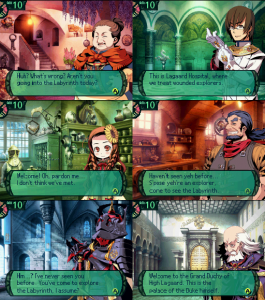 to challenge the towering labyrinth and blaze a trail skyward to the floating castle, a call that you and your party must answer.
to challenge the towering labyrinth and blaze a trail skyward to the floating castle, a call that you and your party must answer.
Once again the town menu has seven different locations, all essentially the same in functionality as those of the town of Etria: Inn for saving and healing, Hospital for undeadifying, Sitoh Trading is your item shop, the Stickleback Bar is your quest hub, the Explorers Guild is there for party management, the Duke’s Palace replaces Radha Hall as the story mission center, and the Forest Entrance still leads to the dungeon.
The dungeon maintains its five floor per strata format as well, but in a somewhat confusing twist, seeing as it is now a tree rather than a cave, you climb UP it rather than DOWN it as you had in the first game. After having transferred my team over from the end of the first game via the end game code, I constantly found myself instinctively heading back down towards town when I thought I was headed further into the labyrinth.
I haven’t really bothered to say so thus far, but the art and design of the Etrian Odyssey games really are pleasantly unique, even in spite of certain hardware limitations. It may not be in HD but the sprawling halls of the dungeon are strangely relaxing to look at, and can even be a bit awe inspiring at times. The random encounter monster designs are charming in an almost cartoony sort of way and yet the bosses can be genuinely intimidating. It all rests on the perfect line between having just enough detail to be inspiring, and lacking just enough to let your imagination run wild.
The first Stratum this time around is the Ancient Forest. In what has become a tradition, the first stratum is always a fairly tame looking kind of green woody sort of area, with progressing levels turning more flashy as you go along. This is not to say the first stratum isn’t flashy in its own right: the green forest is dotted with colorful flowers and ancient stone support structures.
You’ll have plenty of time to soak it in at first too, as the new tutorial mission is no longer content with telling you to map a certain expanse of the first floor before moving on. No, this time around you are taken blindly into a far corner of the first floor map and told to find your way back while mapping the rest of the area as well. Do be sure to save before going in, because if you die without saving, you will have to re-register your guild and party. Considering that this game retains its predecessor’s difficulty, this can mean many an untimely death for you and your party, especially in early levels if you’re not careful.
In particular, I will say this right now: DO NOT open the door at the south end the dungeon from the intro mission’s starting point and attempt to flee rather than rest. It is full of butterflies. Yes, I said butterflies: pink butterflies in fact. They are poisonous, and they will massacre your level 1 party in a heart beat. I wouldn’t normally give something like this away, but when you’ve barely even had the chance to save, this kind of deathtrap can be annoying and really sap your will to play, and I don’t want that.
Anyway, you’ll continue through the dungeon and Heroes of Lagaard seems to make a conscious effort to brighten things up. Unlike the first game’s somewhat logical progression of ecology as the foliage got thicker and warmer as you dropped into the labyrinth until eventually turning into barren dessert, the first four strata of the new labyrinth are seasonal, working from Summer, to Autumn, to Winter, to Spring, and each having a very distinct color theme all their own.
Once again I’ll leave the details of the last two strata unmentioned, but like the first game, the story takes its time showing up, waiting until you’re familiar and comfortable with the game before dropping a few twists and surprises on you.
Now, this brings me to the most recent game in the series, Etrian Odyssey III: The Drowned City. I have to apologize for not saying this sooner, but if I really had to encourage you to pick up this series, I would probably recommend you start with The Drowned City and skip the first two. The third game is just over all easier to pick up on and generally more user friendly than the first two games, or at least the first game to be sure.
Taking place as a kind of unspoken prequel to the first two games, The Drowned City takes place in the city of Armoroad, a bustling port town in the cataclysm sunken world alluded to in the prologue to Heroes of Lagaard. Your job, as always, is to explore a mysterious dungeon surrounded by the particular city’s mythos. This time around, the myth in question claims that when an earthquake sunk part of ancient Armoroad, the great technology of the ancients was lost with it. Your objective is to first verify if the myth is true and if so retrieve the lost technology for the good of mankind.
As a fun twist to keep things fresh, the Drowned City scraps all of the previous classes and introduces its own unique batch of 10 different starting classes, with one of two different unlockable classes made available depending on certain paths you choose in the story. These new classes include:
The Prince/Princess – is sort of like the troubador from the previous games, the royal class focus on full party support skills that buff individual lines in the party with added attack, defense, and speed. They also have a host of unique passive healing skills that active automatically under certain circumstances.
The Gladiator – replaces the Landsknecht as the standard balanced front line fighter, and can choose to specialize in either swords or maces. Swords skills return, taking advantage of group and splash damage, while Mace skills can break or bind enemy limbs to prevent the use of certain skills and abilities.
The Hoplite – covers the Protector’s niche as the heavy weight defensive characters that help buff defense and soak up damage for the party with skills like provoke to draw enemy attacks. They have the option to wield swords but their real potential lies in mastering the use of spears.
The Buccaneer – is a fresh new class that juggles specializing in rapier swashbuckling and pistol sharpshooting, compiled with a number of luck based skills to up critical attacks and even add extra attacks per turn, the sea faring pirates make for a fun sort of wild card.
The Ninja – Yes, yes… This game put both Pirate and Ninja classes at your disposal. Utilizing a wide array of status ailment inducing knife techniques, as well as cloning techniques and even a skill that gives normal attacks a chance to instant kill, the ninja’s strong point lies entirely in its skill rather than brute force.
The Monk – is perhaps the strangest new class. A choice of balancing damage dealing martial arts skills and chi-based healing techniques, the Monk is the new Medic, but with the added potential to specialize as an unarmed front line fighter.
The Zodiac – replaces the Alchemist as our alternative to classical magic users. Rather than alchemical proto-science, the Zodiac utilizes astrology to manipulate the powerful etherial energies of the vast universe to call down Fire, Ice and Lightning attacks.
The Wildling – is a tricky but interesting addition to the cast. As a beast master class with the ability to summon a wide range of different monsters, from slimes, bugs, and snakes, to lions, tigers, and rampaging bulls to help fight along side the party putting a variety of monster-exclusive skills at your disposal.
The Arbalist – replaces the old survivalist with a selection of crossbows and hand cannons as their favored weapons. Ranged fighters that take no penalty to damage output when attacking from the back line. They also make use of special skills that target whole groups of enemies.
The Farmer – is another oddball class out of the new batch, the Farmer is essentially a noncombatant and instead specializes in gathering items, upping monster drop rates, and increasing the odds of finding rare loot. They also have a number of support skills that prevent them from being complete deadweight in battle.
The third game also adds a nice selection of re-colors for every character model, making a total of 96 different available character models: that’s 48 male and 48 female, 16 in total of which are of the two unlockable classes. Oh, but that’s not all! On top of these 12 new classes, accessing the 3rd Stratum allows for party members to start multi-classing. With subtle differences in skills made available to sub-classes compared to main-classes, this makes for over 50 different combinations of classes, all with potential for synergistic skill combinations.
Apart from a 10 brand new sets of skills for each class, the game also adds a new skill system called the Limit Skills. Rather than requiring skill points to add new skills to individual characters, Limit Skills are obtained by collecting scroll items in the labyrinth or as rewards from quests, and can be freely assigned and reassigned to multiple party members. Instead of using Technique Points like normal skills, Limit Skills drain a Limit gauge that builds as you give and take damage in battle. Once full, the Limit gauge allows you to execute your equipped Limit Skill as a free attack that does not count as any individual character’s attack for the turn, meaning the full party can attack that turn as usual. (To be perfectly honest I went through the whole game without even using these, but if I had it certainly would have made boss fights a bit easier.)
Again, the map tool got a few small upgrades, including an autopilot that allows you to place down arrows that, when autopilot is turned on, will move your party without you needing to touch the d-pad. More importantly however The Drowned City introduces a second mode of exploration. When you start to get weary of marching through the underground labyrinth, you have the option of hopping on board your ship and sailing across the world that has been shaken like a box of puzzle pieces by the great cataclysm, and discover and pave new trade routes with foreign islands. While at sea you can fish, explore islands, and raid pirate ships for all kinds of goods that you can sell for money. To top it off, certain island locations unlock Sea Quests, that require you to aid an NPC party in fighting off exclusive boss monsters with rare reward items.
The town gets a new set up, removing the hospital and turning the Inn into the typical RPG coverall for both healing the injured and reviving fallen party members, and adding on the port for the new sea exploration and quests I just mentioned. Apart from those two changes, the rest is pretty straight forward; you have a shop for items, a pub for quests, the guild for your party, the local government for missions, and your door to the labyrinth itself. Some minor tweaks that really help muffle the difficulty of the previous games are that quests now reward your party with Exp as well as money and/or items, which makes leveling significantly quicker.
Another new feature can be found in the item shop. Via the use of hammers, players can now forge stronger weapons. Each hammer item has a particular attribute that it can lend to weapons, whether that be raising stats like Strength, Vitality, and Luck, adding elemental properties like Fire, Ice and Lightning, or status ailments like Blinding, Poison, and Sleep. To forge a weapon however you will need a good deal of items and money to spend on each upgrade. Personally I had a lot of fun equipping one of my party members with all the Luck boosting armor I could find, and then equipping him with a dagger forged with an Instant Kill hammer to speed up grinding through a lot of the random encounters.
The art work also gets another noticeable upgrade, and this game’s set of strata may be some of my absolute favorite. The actual format of the dungeon changes just a bit and shifts back to a descending dungeon instead of ascending. Strata are only four levels deep, instead of five, with the fifth stratum extending to five floors to end the dungeon with just twenty-five floors short, as opposed to the earlier games’ thirty total floors.
This shortage is compensated for in part by the added play time provided by the aforementioned seafaring aspect however. What’s more, the game is the first in the series to feature two different branching story lines depending on which of two factions you choose to side with about half way through the game. There is of course an additional third “true ending” that requires you mediate between the two factions rather than choose either, but is only attainable after completing the story once with one of the other endings. Another shift of pacing to make note of is that, given the multiple ending feature, the story is much more prominent this time around. The first major plot developments take place as early as the end of the second strata and the story has you making your choice of factions before the end of the third stratum.
Around that same time you also gain access to another of The Drowned City‘s big selling points, the sub-class system. Each character can now gain access to a secondary class and their full skill tree. This creates a huge list of new skill combinations, among which are a host of fun and exploitable combinations that can either make or break the game.
I nearly forgot, but there is also a multiplayer feature that allows some item trading as well as co-op Sea Quests. I can’t comment on it as I have yet to try it with anyone. While I’m on the subject of things I forgot to add earlier; it’s worth noting that the first Etrian Odyssey was listed as part of Atlus’s contribution to the 3DS’s lineup of third-party launch titles in Japan, along with some Shin Megami Tensei titles. That news is months old by now however and I’ve personally heard no news of it since, so I can’t say how it went over, or what chances there are of seeing it overseas.
Well, I think I’ve said all I can at this point, and certainly I’ve been rambling enough, and I don’t want to drag you through any more of this, so I’ll leave you here with this brief overview of the Etrian Odyssey games, and hope that something in here has piqued your interest in this unique little DS series. While I must admit that I can’t bring myself to recommend this game to just anybody, if you are a fan of RPGs, and the kind of gamer who enjoys a good challenge, these games may just be worth picking up. As a parting gift, here is a collection of screen-caps of my 91.8 party in Etrian Odyssey III: The Drowned City.





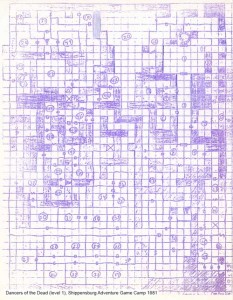

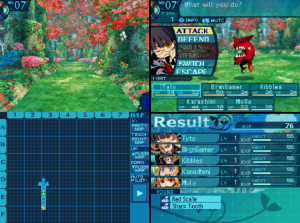
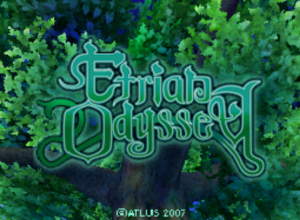
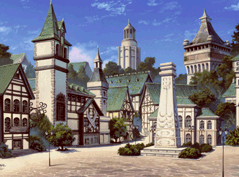
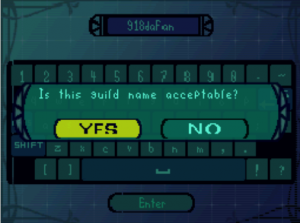



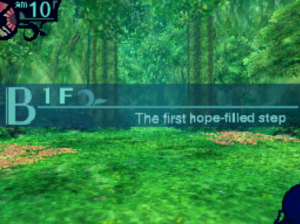
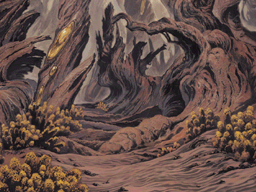

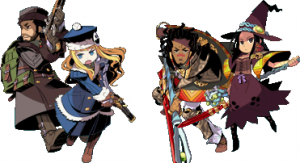
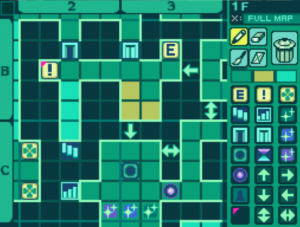
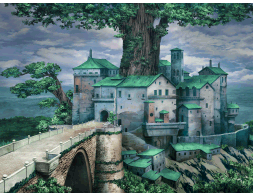
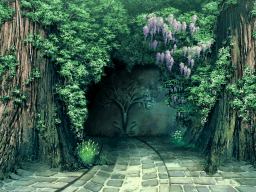




![EO3-classes[s]](http://918thefan.com/wp-content/uploads/2011/06/EO3-classess.png)
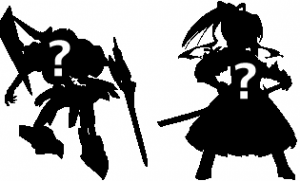

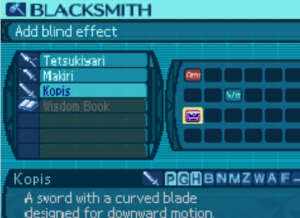



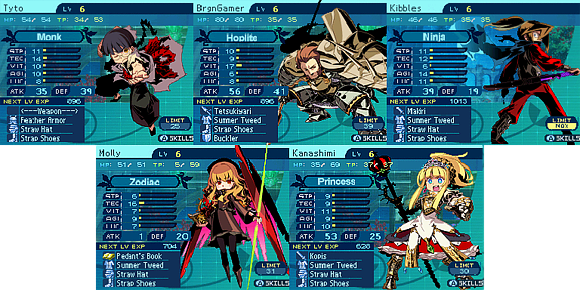


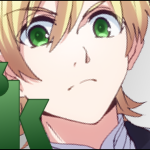



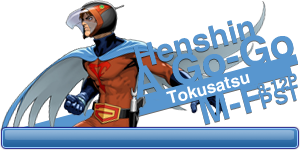






Wow, this article is long! It looks like a nice game though. I would consider trying it if I had a DS.
I like that my weapon is a book. If I ever ran out of technique points, I could just beam the enemy in the head with it.
That specific book had only 1atk in exchange for having something like a 50% chance of inflicting blindness on contact. I am tempted to make a “she blinded me with library sciences” joke.
I’ve played the first two, and I never really got too far. It’s an awesome game, and I love the oldschool FPRPG dungeoncrawl style, but I guess I wasn’t ready for the challenge.